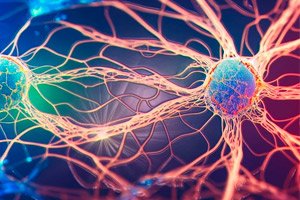
All iLive content is medically reviewed or fact checked to ensure as much factual accuracy as possible.
We have strict sourcing guidelines and only link to reputable media sites, academic research institutions and, whenever possible, medically peer reviewed studies. Note that the numbers in parentheses ([1], [2], etc.) are clickable links to these studies.
If you feel that any of our content is inaccurate, out-of-date, or otherwise questionable, please select it and press Ctrl + Enter.
Genetic factors play a significant role in the development of psychotic symptoms in adolescents
Last reviewed: 02.07.2025
 ">
">Study finds genetic links between attention deficit disorder, functional brain connectivity and risk of early psychosis in adolescents.
In a recent study published in the journal Nature Mental Health, researchers examined the relationships between neuropsychiatric and cognitive polygenic scores (PGS), attention-related phenotypes, and psychosis spectrum symptoms.
Attention deficits and the risk of schizophrenia
Attention problems often manifest well before the onset of psychotic symptoms in people who later develop schizophrenia (SCZ). In fact, attention deficits are one of the first signs of risk for psychosis, and therefore attentional deficits and neurodevelopmental changes may reflect a genetic predisposition to SCZ. Although many SCZ-associated genome variants have been identified in adults, the etiology of psychotic symptoms during critical periods of development remains unclear.
Adolescence, characterized by cognitive changes and reorganization of brain networks, is considered a risk period for psychosis. Recent studies indicate that PGS for neurodevelopmental disorders and attention deficit hyperactivity disorder (ADHD) are associated with subclinical psychotic symptoms in adolescence. In contrast, PGS for SCZ is weakly associated with psychopathology in adolescence and childhood.
In this study, the researchers examined the relationships between attentional variability, genetic risk, subclinical psychotic experiences (PLEs), and attention-related functional brain architecture in early adolescence.
The data came from 11,855 children in the Adolescent Cognitive Brain Study, which followed participants aged nine to 11 for 10 years. The study included those with symptoms consistent with psychotic disorders.
Participants completed seven tasks measuring executive function, working memory, attention, episodic memory, language ability, and processing speed. Reaction time tasks were also used, including a card sort for size variation, a Flanker task, and a pattern comparison to assess processing speed. Inter-individual variability (IIV) for each task was examined for PGS and PLE, and data were aggregated to create a composite IIV across all tasks.
Questionnaires such as the short version of the Prodromal Questionnaire for Children (PQ-BC) were used to assess PLE. All study participants underwent magnetic resonance imaging (MRI) of the brain. The connectivity between networks was determined using pairwise correlations.
Only attention-related functional networks were assessed, such as the anticorrelation between the default mode network (DMN) and the proactive network (TPN), as well as the within-network functional connectivity of DMN and TPN, including the cingulate operant network (CON) and the dorsal attention network (DAN). Statistics from recent genome-wide association studies of psychiatric phenotypes were obtained from the database.
Altered functional connectivity and larger IIV were associated with more severe PLE. Larger IIV was associated with increased PLE severity as assessed by the PQ-BC. Weak anticorrelations between DMN and DAN and between DMN and CON were found to be significantly associated with PLE severity.
A significant association was also found between PLE severity and weaker functional connectivity within the DMN, DAN, and CON. High PGS for IIV, Neurodev, and ADHD, as well as low cognitive PGS, were associated with increased IIV.
However, PGS for SCZ was not associated with IIV. At the same time, lower cognitive PGS and higher PGS for ADHD, SCZ, and Neurodev were associated with more severe PLE. PGS were not associated with DAN-DMN anticorrelation or DAN intra-network functional connectivity. Note that IIV-mediated associations between cognitive, Neurodev, and ADHD PGS and PLE were involved in 4–16% of these relationships.
The associations between cognitive, ADHD, and Neurodev PGS and PLE severity weakened over time. However, no significant interaction was observed between time and PGS for SCZ.
Altered connectivity between attention-related networks and increased attentional variability are associated with increased PLE severity. Genetic predisposition to various neurodevelopmental disorders and low cognitive ability are also associated with increased PLE severity and attentional variability.Associations between cognitive, Neurodev, and ADHD PGS and PLE severity attenuated over time, whereas associations between PGS for SCZ and PLE remained consistent. Overall, our results suggest that genetic susceptibility to neurodevelopmental disorders that may manifest as subclinical psychotic symptoms in early adolescence is partly mediated by attentional deficits.
